Home | Major Sporting Events | Paralympic Games
2010 Paralympic Games - Vancouver
PreviousNext
The tenth Paralympic Winter Games powerfully complemented Canada's athletic and cultural achievements as hosts of the 2010 Olympic Winter Games in Vancouver. International competition for disabled athletes had been utterly transformed since Canada had hosted the fifth Paralympic Games in 1976. In part, this reflected the bold vision of Dr. Robert Steadward, who helped unite fragmented disabled sport advocates and organizations world wide, forming the International Paralympic Committee (IPC) in 1989. Named founding president of the IPC, Steadward tirelessly enhanced funding, recognition, and respect for the Paralympic movement. His careful administration and determined vision culminated in an agreement signed between the IPC and the International Olympic Committee in 2001, ensuring the Paralympic Games would be staged concurrently with the Olympic Games as a truly parallel event.
With over 500 athletes from 44 countries competing, Canadian athletes placed third in the 2010 Paralympic Winter Games, winning 10 gold, 5 silver, and 4 bronze medals. Perhaps no Paralympic athlete captured the collective imagination of Canadians that year like cross-country skier Brian McKeever. First taking up skiing when he was only three years old, McKeever had pursued the sport competitively since the age of 12. However, at 19 he was diagnosed with Stargardt's disease, a genetic disorder that causes central vision to degenerate. Despite retaining a degree of peripheral vision, he was declared legally blind within two years of diagnosis.
Adapting to new limitations imposed by the loss of his eyesight, Brian McKeever remained determined to succeed as a competitive cross-country skier. This brought physical sacrifice as he suffered frequent injuries due to collisions and mishaps in ski races, fracturing a rib in 2008, and an arm at the Canadian Championships in 2009. Despite these difficulties, he remained resolutely optimistic and self-confident, insisting disability had simply become "...a part of who I am, and I like the person that I am."
In 2010, Brian Mckeever made history as the first Canadian ever to be named to both Olympic and Paralympic teams. However, despite having qualified alongside able-bodied athletes, he was not ultimately asked to race with the Canadian Olympic Team in Vancouver. Suffering intense disappointment, McKeever once again rallied his fierce self-confidence. Turning to the Paralympic Games with additional determination and competitive fire, he found personal redemption by winning three gold medals in the ski race events.
Recognizing his success was part of a much bigger story, Brian McKeever believed the 2010 Paralympic Games had transformed Canadian perceptions of disabled sport. Along with enhanced media coverage, he recalled Paralympians received more recognition from ordinary people on the streets of Vancouver. These interactions enriched the exuberant, celebratory mood that had already defined the 2010 Olympic Winter Games. More importantly, the genuine awe and respect accorded disabled athletes that year heralded a new level of popular support for Paralympic achievements in Canada.
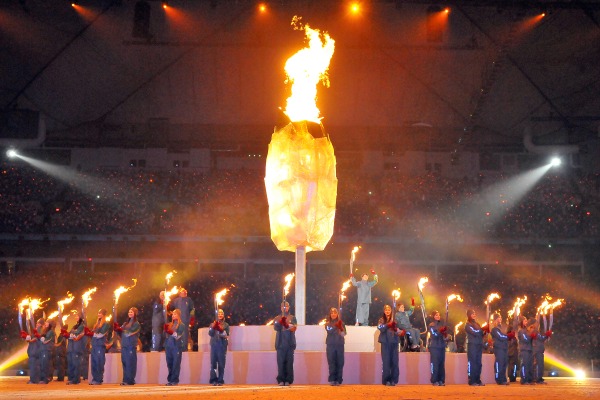
The torch relay for the 2010 Paralympic Winter Games started in the nation's capital Ottawa and went to 11 communities in ten days. Inspired by the theme 'Ignite the Flame in each of us', each community celebrated the relay in a unique way. The cauldron was lit at the opening ceremony by Zach Beaumont, a young snowboarder.
Collection: Canada Paralympic Committee/Matthew Manor

The torch relay included 600 torchbearers and included Canadians from all walks of life. Linda Keith, who was torch bearer #278 was one such Canadian. Other torch bearers included former and current Paralympians and people who were advocates for the rights of the disabled.
Collection: Private collection: Linda Keith

The mascot for the 2010 Paralympic Games was Sumi, a guardian spirit. It was modeled after an orca whale, with the wings of the thunderbird and legs of a black bear. The character reflects First Nations imagery and represents the diverse backgrounds of Canadian and participating athletes. Mukmuk the marmot was the sidekick to the mascots.
Collection: Canada's Sports Hall of Fame; Private Collection Helena Deng

The Paralympic Games brought Canadians together as they cheered on their athletes. The Canadian flag was highly visible throughout the Games and the athletes were inspired by the enthusiastic support of their fans from across the country. Canadians felt a great national pride in the achievements of their athletes at these Paralympic Games.
Collection: Canadian Paralympic Committee/Matthew Manor
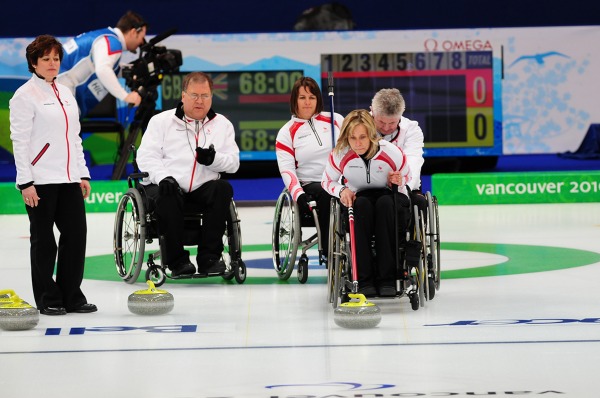
Wheelchair curling became an official sport at the 2006 Paralympic Games in Torino. The sport is for non ambulant athletes or those who can only walk short distances. It is played on the same ice, with the same rocks, as regular curling and is governed by the same rules. The rock is thrown by hand or with the use of an extender stick from a stationary wheelchair position. The team must include both men and women.
Collection: Canadian Paralympic Committee

Lauren Woolstencroft competed in the alpine events at the 2010 Paralympic Games. Her fans, including friends and family, came out to support her in her bid to win five medals. Lauren showed her courage, capability and focus in her achievement of winning all five of the events she competed in.
Collection: Canadian Paralympic Committee/Matthew Manor
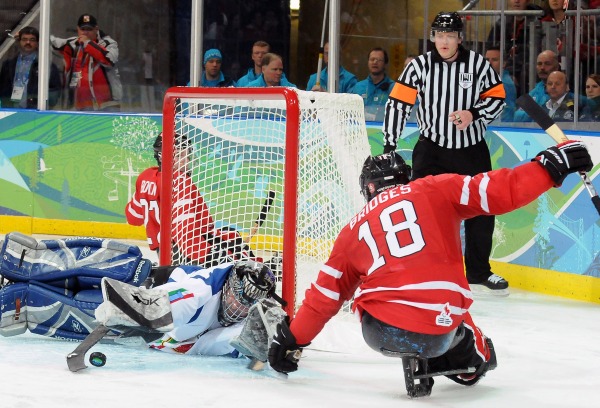
Ice sledge hockey has been an official sport since the 1994 Paralympic Games in Lillehammer. Athletes use a metal sled on two skate blades and use two shortened version of hockey sticks with metal teeth on the end to propel themselves. The game is played according to regular ice hockey rules and is one of the most popular events at the Paralympic Games.
Collection: Canadian Paralympic Committee/Matthew Manor
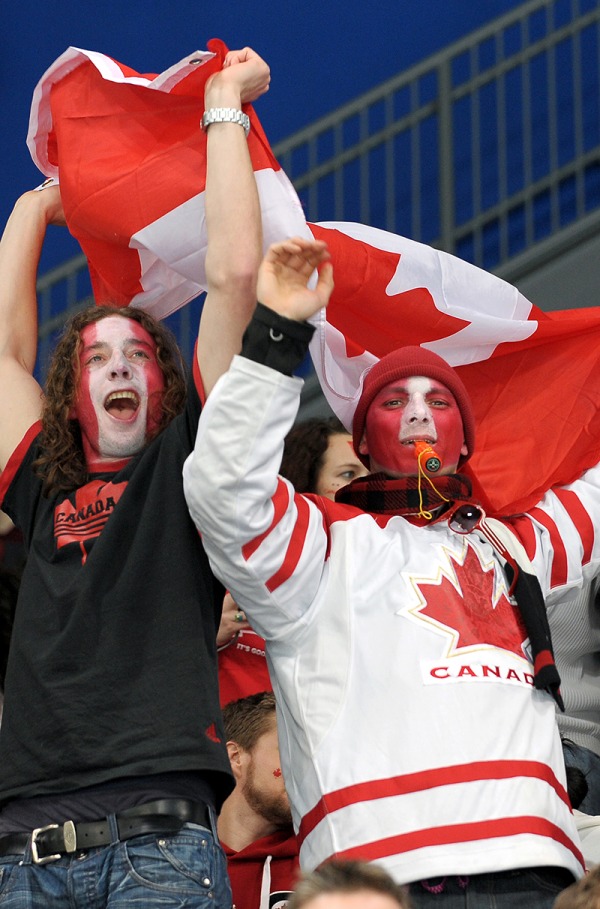
The fans who watched Team Canada fans sledge hockey games were among the nosiest and most colourful. Wearing the Team Canada jersey and often painting their faces with the maple leaf, these fans cheered on all the teams at the tournament showing a true appreciation of the game.
Collection: Canadian Paralympic Committee/Matthew Manor

Para-alpine skiing was first held at the 1976 Paralympic Winter Games in ?rnsk?ldsvik, Sweden with two events. Today all five events of downhill, Super-G, slalom, giant slalom and Super combined are held. Paraplegic athletes compete in the sitting category. A sit-ski has a moulded fibreglass body on a mono ski and the athlete uses outriggers instead of poles. The rules are the same as with any alpine ski race, the fastest time wins.
Collection: Canadian Paralympic Committee/Bogetti-Smith
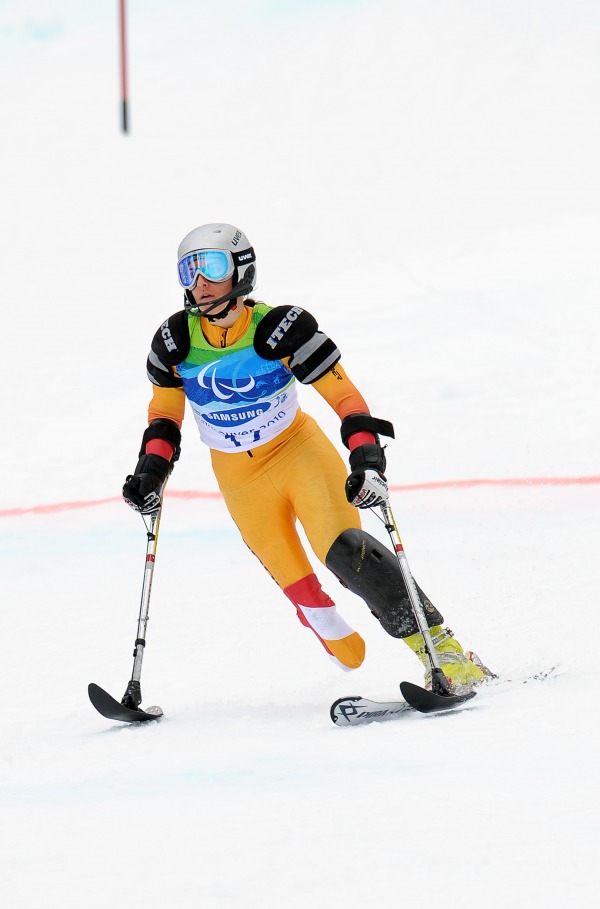
The standing category in para-alpine skiing involves those athletes with amputations or impairments that cause a similar loss of limb. Some of the athletes such as single-leg amputees who ski without a prosthesis use special poles called outriggers. These poles help the skier with balance.
Collection: Canadian Paralympic Committee/Matthew Manor
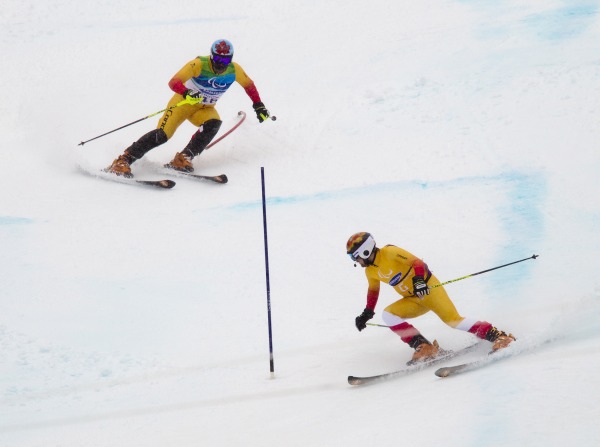
The visually impaired category involves athletes with limited visual acuity. A guide is mandatory and the competitor and guide act as a team. The guide will direct the blind skier down the course by skiing in front and using only voice signals or radio communication. No physical contact is allowed during the race. This is an event where trust in your partner is paramount.
Collection: Canadian Paralympic Committee/Bogetti-Smith

Biathlon, where the athlete is required to cross country ski and then shoot in a rifle range has a special adaption for visually impaired competitors. The electronical rifle allows aiming by hearing. The closer the rifle points to the centre of the target the higher the tone is. Different tones allow the shooter to find the exact centre of the target.
Collection: Canadian Paralympic Committee/Bogetti-Smith
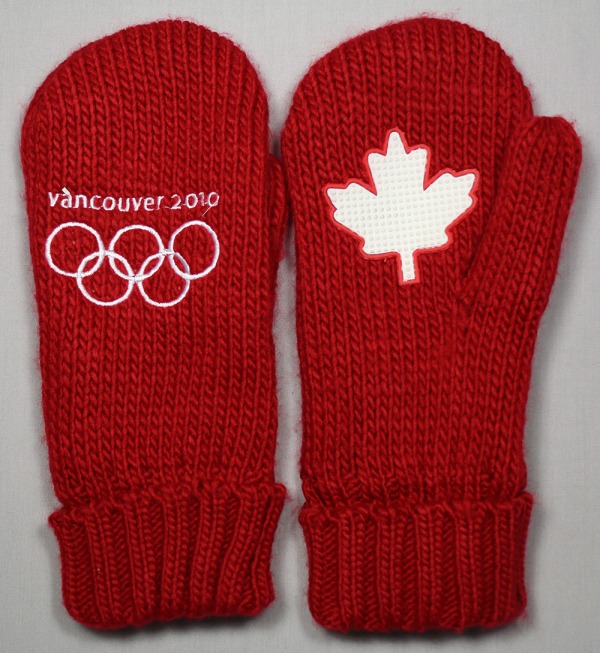
These mittens are embroidered with the symbol for the International Paralympic Committee (IPC). It is composed of three 'agitos' encircling a centre point to emphasize the role of the IPC in bringing athletes from all over the world together to compete. These mittens were among the most popular items of clothing that the fans wore in 2010.
Collection: Private collection: Tracy Keith

'Man Becomes Mountain' is the name of the logo for the 2010 Paralympic Winter Games. It depicted a human form which is also a green forest, dark blue mountain and blue sky, symbolizing the geography of Vancouver and Whistler. The emblem also reflected the inner strength of the athletes as they pushed themselves to new heights.
Collection: Canada's Sports Hall of Fame

Brian McKeever started cross country skiing at the age of three and was competing by 13. His brother Robin was his guide from 2002 to 2014 and was an Olympian himself having competed at the 1998 Olympic Winter Games in Nagano. Working together has brought the brothers closer together and allowed them to share the passion and joy of competing.
Collection: Canadian Paralympic Committee/Bogetti-Smith
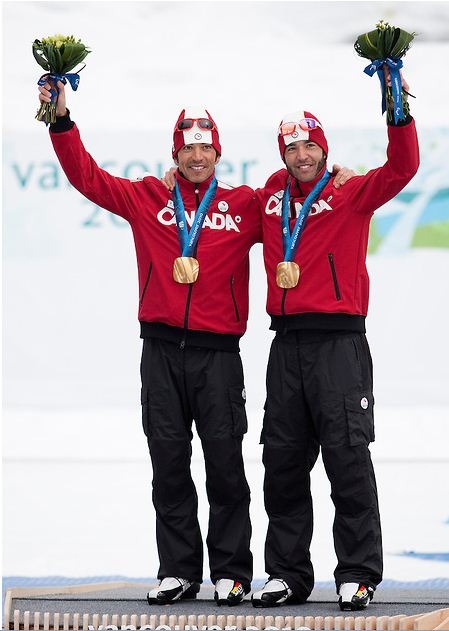
Brian McKeever won three gold medals at the 2010 Paralympic Games in Vancouver. He believes that the Vancouver Games spoke to Canadians. With the exposure from having the Games in Canada people are now realizing the high calibre of the events and the importance of supporting the athletes.
Collection: Canadian Paralympic Committee/Bogetti-Smith

With his three gold medals at the 2014 Paralympic Winter Games in Sochi, Brian McKeever became the most decorated Winter Paralympian in Canadian history. With his new guides Eric Carleton and Graham Nishikawa he built a strong relationship that allows them to work as a team and to push each other to the limits.
Collection: Canadian Paralympic Committee

Brian McKeever also competed in biathlon and won a bronze medal in this event at the 2006 Paralympic Games in Torino. His message to aspiring Paralympians is that there is no limit to the level of performance.
Collection: Canadian Paralympic Committee
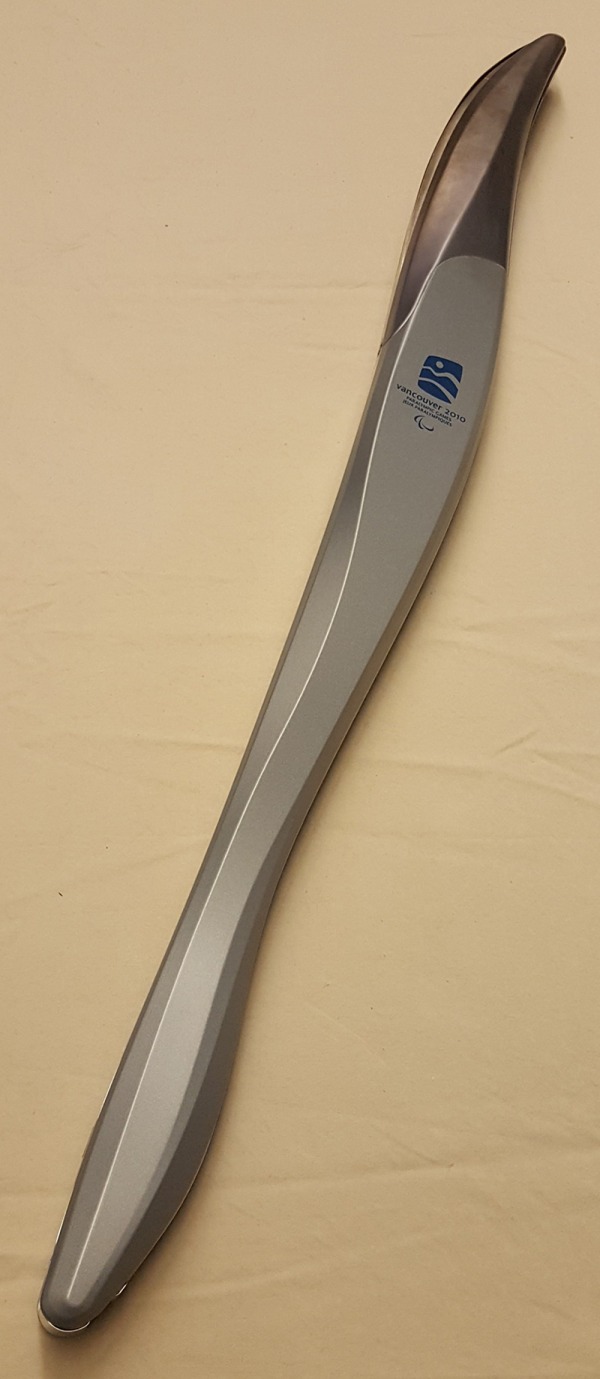
The torch used for the 2010 Paralympic Games was a curved steel blue torch designed by Bombardier. The flame for the torch was ignited each day of the relay by members of the local First Nations Community. Tyler Mosher carried this torch, Number 14, on his leg of the relay in Vancouver.
Collection: Private Collection: Tyler Mosher
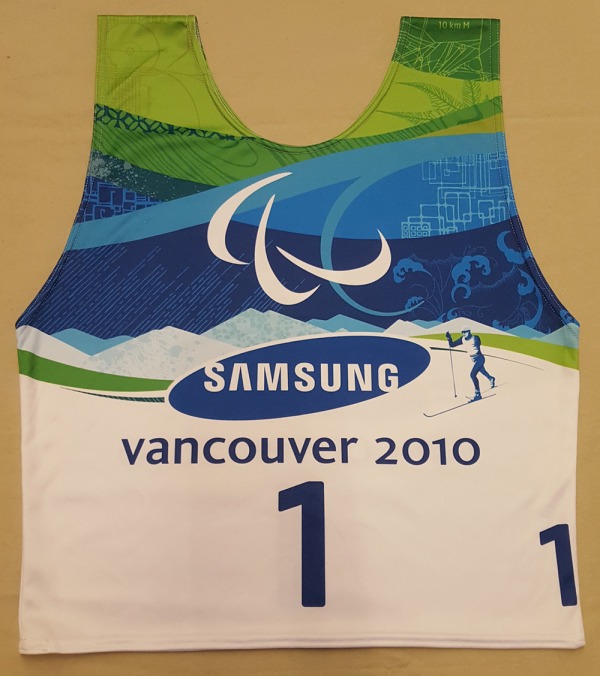
Tyler Mosher is 40% paralyzed below the waist due to a snowboarding accident. Learning to walk again he started to cross country ski as a form of rehabilitation to improve his quality of life through sports. Showing his resilience and courage he competed in the para-nordic events at the 2010 Paralympic Winter Games in Vancouver.
Collection: Private Collection: Tyler Mosher
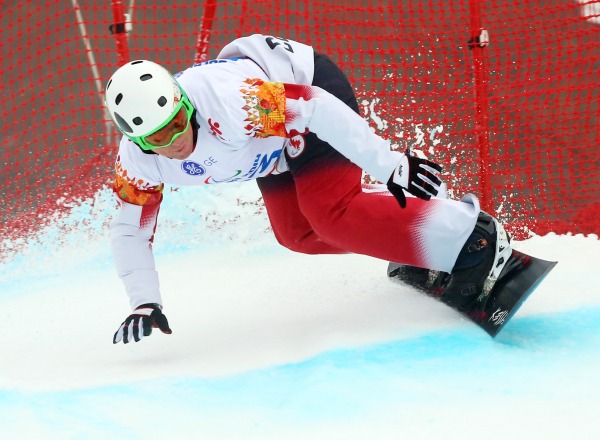
Para-snowboarding was included at the 2014 Paralympic Winter Games in Sochi for the first time. Tyler was instrumental in bringing snowboarding to the Paralympic Games through his dedication and advocacy work for this sport and the athletes who compete in it.
Collection: Canadian Paralympic Committee/Scott Grant
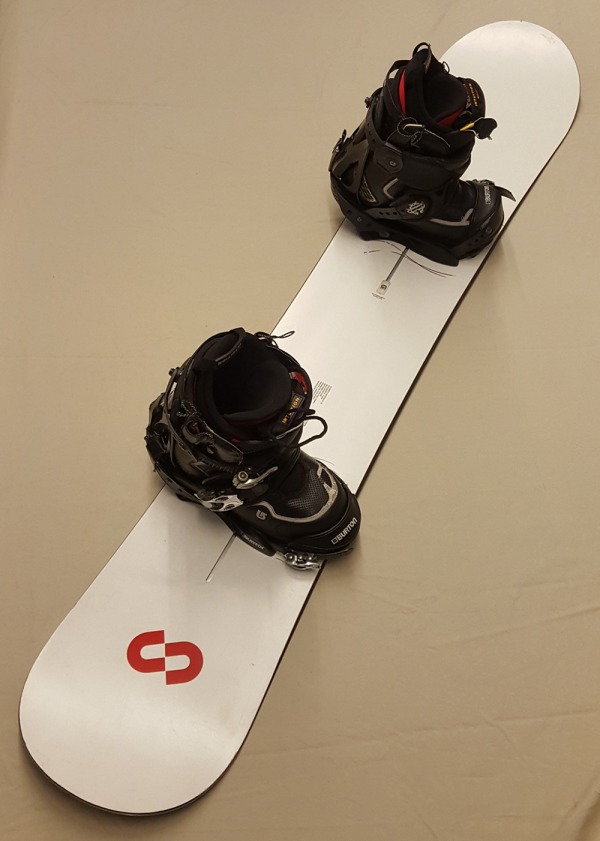
Tyler Mosher used a snowboard with an extra strap binding to his boots. He helped develop snowboarding for people with a disability in Canada. He has shown that anything is possible if you are willing to try your best, ask for help when needed and keep a positive outlook on life.
Collection: Private Collection: Tyler Mosher
Previous Next


